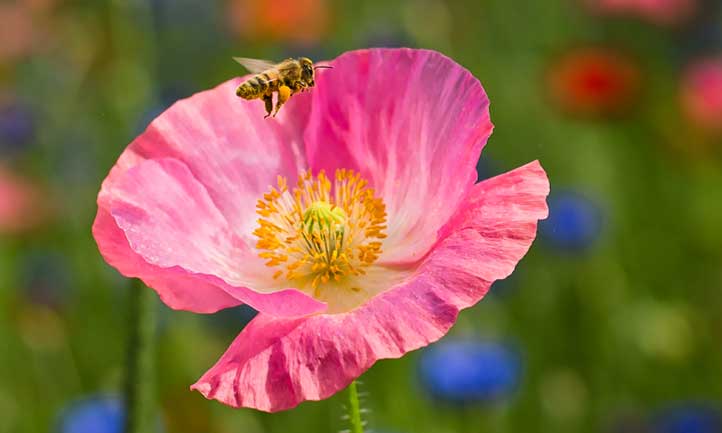Sowing Seeds of Remembrance with Your Own Poppy Field
Author: Joan Donaldson
After viewing our poppy field — planted in honor of our son, SGT Mateo Donaldson, many people ask me how they can replicate the same scene in their gardens. The first time I attempted to plant a wildflower garden, my husband rotated a small area in a field. After raking and leveling the dirt, I sprinkled the seeds and walked over them to press them into the soil. Only a few blue larkspurs and white baby's breath bloomed that spring amidst the healthy grass that choked out the wildflowers.
So, unless you choose a spot in your garden that is clear of weeds, the first step is to smother the grass. During the summer, spread out a tarp or landscape fabric, and anchor it down with staples, boards, bricks, etc. Leave this spot alone for several weeks.
We order our blend of white ox-eyed daisies, blue bachelor buttons, and red poppies from American Meadows. If you have any questions, call their helpful staff. They can offer suggestions of flowers that are suitable for your growing zone, and they can estimate how many seeds you will need depending on the size of your planting area. Usually, for a small area, a few packets of each flower should supply enough seeds. When to plant the wildflower seeds depends upon your growing zone.

Because I live in Michigan, our field is sown in October. If a tarp covered your plot, remove it, rake the soil, break up any clumps of dirt, and, if any grass roots still exist, remove them. Mix your seeds together in a small container, like an empty Parmesan cheese carton, which has a lid with large holes. You might notice that the poppy seed looks like dust, but the vivid red will capture everyone’s attention soon enough. Start in a corner, and evenly shake the seeds over the prepared plot. When you finish, walk over the ground to press the seeds into the dirt, and water the wildflower garden.
The reason we plant our fields in the fall is that the seeds germinate in the cool weather while any grass seeds remain dormant. During the winter, the tiny seedlings emerge, and in the spring, they grow before most grass sprouts. As farmers say, this way the wildflowers beat out the competing grass.
By late April, the feathery bachelor buttons tower over the growing poppies and daisies, and by late May, their blue flowers twinkle. In June, the daisies and poppies unfold their blossoms, and the view erupts in color. Our poppies peak around the middle of June, but the display lasts until early July before the petals fall and the plants wither. In mid-July, my husband tills the field, and plants buckwheat as a cover crop that will prevent grass from creeping back into the dirt.
Come late October, we once again plant poppies and watch the seedlings during the winter, waiting for the summer display that provides beauty and hope for this farmer and countless others.
Joan Donaldson is the surviving mother of SGT Mateo Donaldson, U.S. Army.
Photo: Angie Smith Photography
